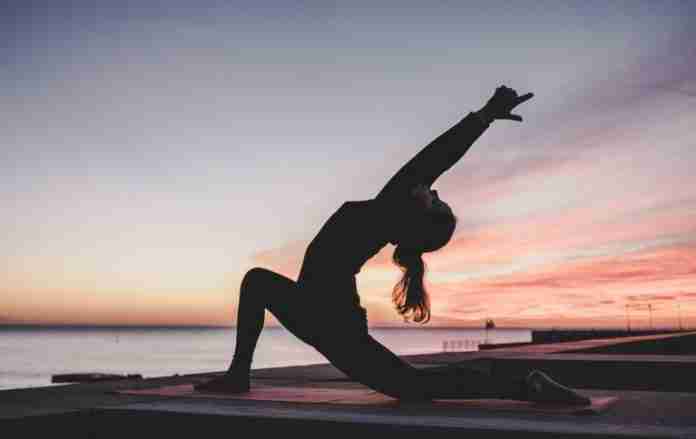The beauty of yoga is that it doesn’t matter your age, fitness level, or body type–yoga is meant for everyone.
If you’ve been thinking about adding yoga to your routine, now is a great time to start. With numerous benefits for both mind and body, your yoga sequences can be customized to fit your body, your goals, and your needs. We’ve gathered a few basic poses that are easy enough for anyone to try but offer benefits no matter if you’re a first-timer or a seasoned yogi.
A huge part of yoga is listening to and understanding your body. Please note that if you have injuries or medical conditions related to your spine, knees, or joints, some of these poses may not be right for you or may require adjustments to make them safer and more comfortable. Please exercise caution and research any yoga poses before attempting them.

Review contents
1. Child’s Pose (Balasana)
This basic resting pose offers a beautiful stretch for your back and shoulders, releasing tension and waking up your spine and muscles for future poses. Kneel on the floor and sit on your heels, letting your big toes touch and your knees sit hip-width apart. Inhale with your arms outstretched, then slowly lower your torso to your thighs as you exhale. Stay here for a few breaths or a few minutes. This pose is a perfect way to rest between poses if you need to.

2. Downward Dog (Adho Mukha Svanasana)
Another great resting poses that’s perfect for reenergizing between poses or ending a sequence. This pose strengthens the arms and shoulders, tones the legs and back, stretches the hamstrings, and stimulates the spine.
It helps to train balance and proper alignment, preparing you for more advanced poses. Inverted poses are also great for stress relief.
This pose can be reached from many different positions, but the easiest way to begin is on all fours, your knees, and palms shoulder-width apart. Draw your abdomen inward, and as you inhale, press your palms into the mat and roll onto the balls of your feet, walking backward with your feet. Bend at the waist and keep a straight back. Make sure your feet are parallel, your palms are flat against the mat and hang your head.

3. Warrior (Virabhadrasana)
Begin with a lunge, making sure your bent knee does not go over your ankle. Plant your feet firmly, turning your back foot outward 45 degrees. Keep your hips facing forward, perpendicular with your front leg. Raise your arms above your head, keeping your hands and fingers engaged and your chest lifted.
Carefully arch your back and look upward toward the ceiling for a more advanced pose. Slowly exhale and lower your hands to the floor to release the pose, then step back into a plank.

4. Staff Pose (Dandasana)
A simple pose can be used as a platform to move into other poses in your sequence. This pose helps to strengthen the back, stretch the shoulders and chest, and improve posture. To perfect your alignment, try sitting against a wall. Your lower back should not touch the wall. Those with tight hamstrings may need to sit on a cushion or block.

5. Seated Half Twist (Ardha Matsyendrasana)
There are so many benefits to a twist pose. They keep your spine healthy and stimulated, stretch your chest and shoulders, relieve upper body tension, and are thought to aid digestion by stimulating your abdominal organs. The half twist pose is packed with benefits and perfect for beginners.
Begin with staff pose. Cross your right foot over your left thigh, then fold your left leg. Hold your right knee and place your right hand on the mat behind you, rooting your palm to the floor. Inhale slowly, and twist as you exhale, bringing your left shoulder toward your right knee and looking over your right shoulder. Be sure to keep your back straight during this pose.































